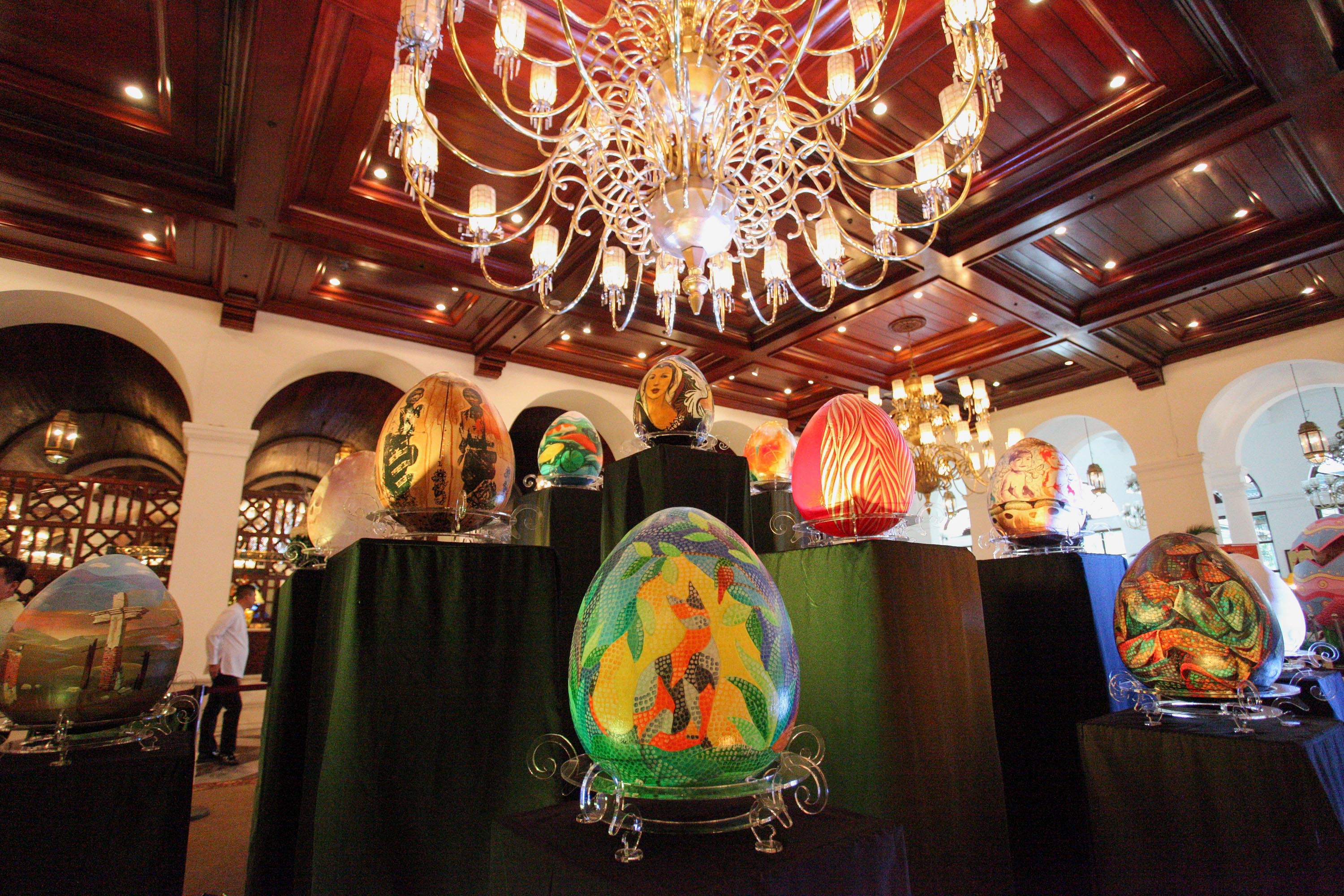EASTER eggs made of fiberglass were showcased by 23 visual artists, including seven Thomasians, in “Hatch,” an Easter Sunday exhibit last April 16 to 30 at Manila Hotel.
Veteran and emerging artists illustrated their personal interpretations of the Easter holiday on 18-inch fiberglass eggs.
“Each participating artist of this group show had an individual discerning style ranging from different artistic genres and generations to different perspectives for the theme,” painting alumnus CJ Tañedo told the Varsitarian.
His piece, titled “Hatch,” showed a dull, two-faced human skull wearing pink bunny ears. Polka dots provided accent to the coffee brown background.
“The distorted twin skill is a generalized representation of the way I wanted to express the negative part of the Lenten season,” Tañedo said.
In contrast to Tanedo’s perspective, Jovito Andres, also a Fine Arts alumnus, painted Koi fish swimming in blue-green water in “Koi Fish.”
“It’s very different from my usual subjects,” Andres said. “For Easter, I believe that we should portray a positive picture because painting nature’s beauty is one way of thanking Him.”
Andres said he intended to render a simple theme to let the viewers “slow down and relax.”
Former Varsitarian artist Mario de Rivera’s “Circle of Time” is a mixed media work of digital and embossed designs. Embellished on the Easter egg are root-like patterns that weave images of a woman, a golden sculpture, bare lovers and a saint.
Thomas Daquioag’s “Ang Tao” feature infants on a floral background accented by purple butterflies. Encircling the lower part of the egg is an olive-colored snake.
Salvador Ching, also a painting alumnus, gave light to the image of Filipino women during the Spanish colonial era in his piece “Barkada,” which depicted coffee-like stains on illustrated images of women wearing the traditional baro’t saya.
Ching said his work, which was also a reference to his “Malolos” series of paintings, was meant to “recognize and reminisce the country’s women in the early times.”
Acclaimed Thomasian artist Raul Isidro used dynamic shades in his abstract painting titled “A Seed of a Cultural Revolution.” Isidro said he wanted to represent the “rich culture of the Philippines that developed through colonization” through colors.
Master printmaker Fil Delacruz injected the style of his “Diwata” series, which started in the 1980s, in his egg design titled “Blessing in Disguise.”
With black as the dominant color of the egg, Delacruz used light-colored paint to illustrate masks, leaves, hands and intersecting patterns around the egg.
Edgar Doctor’s “Marshland” portrayed the aquatic and terrestrial ecosystem, highlighting the dominance of sea creatures on the upper part of the egg.














